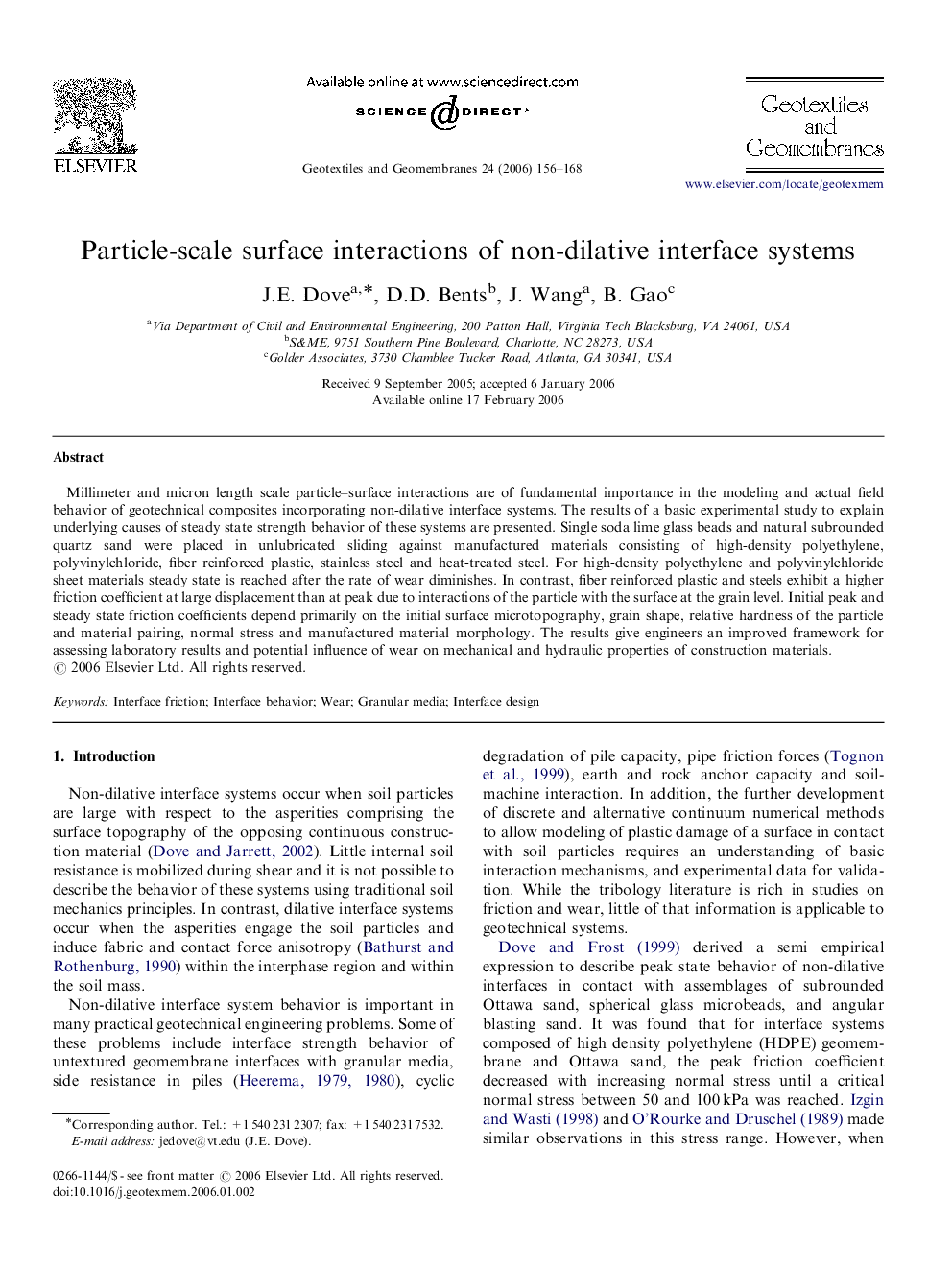| Article ID | Journal | Published Year | Pages | File Type |
|---|---|---|---|---|
| 274578 | Geotextiles and Geomembranes | 2006 | 13 Pages |
Millimeter and micron length scale particle–surface interactions are of fundamental importance in the modeling and actual field behavior of geotechnical composites incorporating non-dilative interface systems. The results of a basic experimental study to explain underlying causes of steady state strength behavior of these systems are presented. Single soda lime glass beads and natural subrounded quartz sand were placed in unlubricated sliding against manufactured materials consisting of high-density polyethylene, polyvinylchloride, fiber reinforced plastic, stainless steel and heat-treated steel. For high-density polyethylene and polyvinylchloride sheet materials steady state is reached after the rate of wear diminishes. In contrast, fiber reinforced plastic and steels exhibit a higher friction coefficient at large displacement than at peak due to interactions of the particle with the surface at the grain level. Initial peak and steady state friction coefficients depend primarily on the initial surface microtopography, grain shape, relative hardness of the particle and material pairing, normal stress and manufactured material morphology. The results give engineers an improved framework for assessing laboratory results and potential influence of wear on mechanical and hydraulic properties of construction materials.
